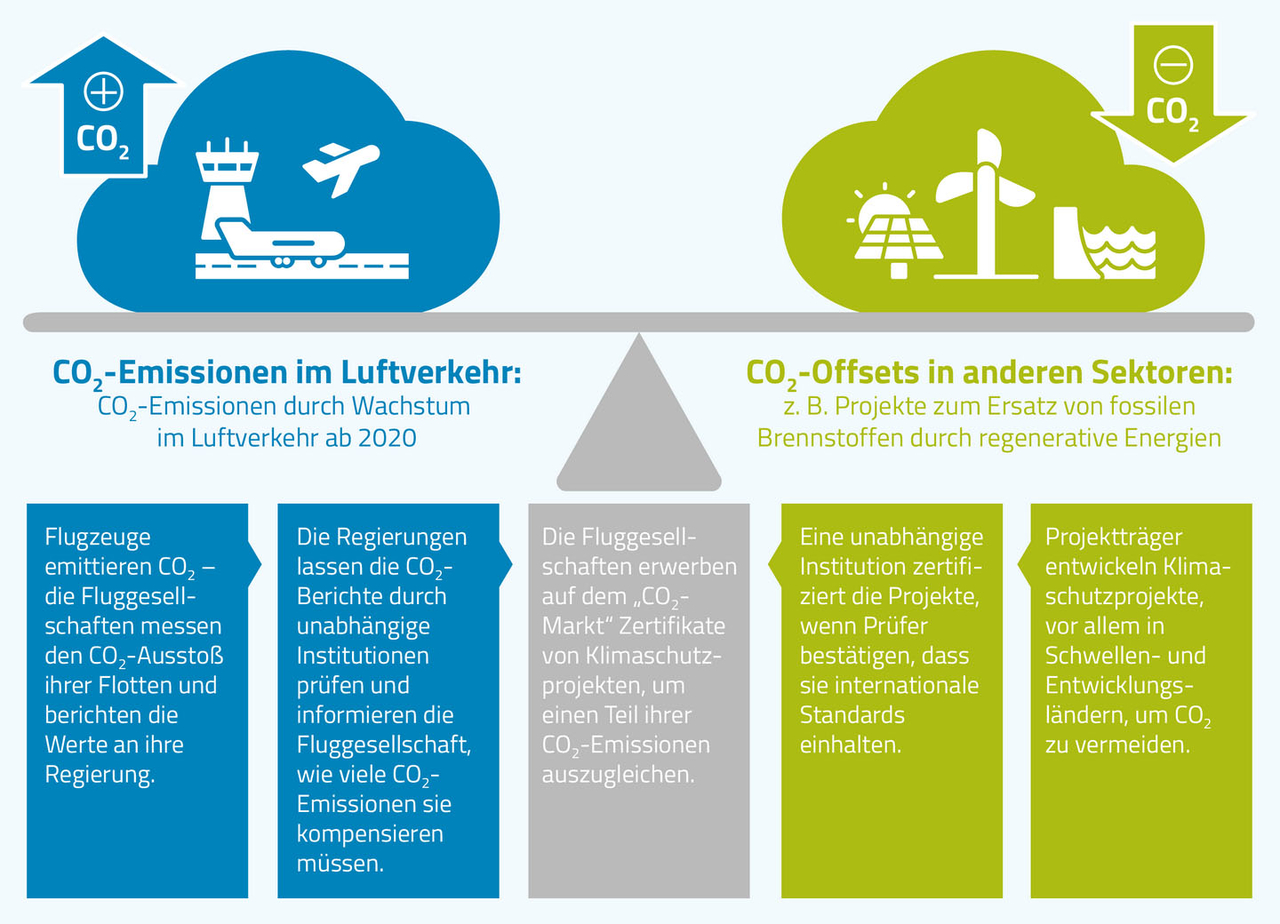Europe’s Green Deal
What matters for aviation
In 100 days the new EU Commission is due to present the details of its „Green Deal“. Aviation is also supposed to become more environmentally friendly. The goal that politics and industry are pursuing together is the right one. But how we get there is essential.
EU emissions trading makes connections via European hubs more expensive

Ensuring fair competition
Effective climate protection in aviation requires concepts that account for world-wide competition. This is the only way to guarantee that emissions are actually reduced and not just shifted from one country to another. Unlike other transportation systems, aviation has been part of the EU Emissions Trading Scheme (ETS) since 2012 and is approaching CO₂ neutrality for intra-European flights. Recently the price for emission certificates has increased noticeably.
Within Europe, the ETS creates equal competitive conditions. However, with respect to the strong competition from the US, Asia or the Middle East, it represents a competitive disadvantage and therefore a burden for Europe. Flights from Europe to non-European hubs are not subject to the ETS and neither are the home markets of our non-European competitors. The EU needs to consider this in its future climate and industrial policies if it considers competitive neutrality important. At the same time, it needs to take a closer look at the excess capacities on the European aviation market, which are damaging for both industry and environment. The practice of state subsidisation of certain airlines should be reviewed just as critically as the inefficient operation of very small airports.
Implement Single European Sky
Planes sometimes have to fly long detours in the European skies. This is bad for the carbon footprint. A Single European Sky (SES) would mean real progress in this respect. A more efficient and uniform airspace with modern technologies and harmonised processes with optimised routing could save up to 10% CO₂ on intra-European routes. In addition, it would increase reliability and punctuality.
Promote alternative fuels
A real option for reducing CO₂ in aviation in the future is the use of synthetic kerosene. Europe should start a road map for the market roll-out of sustainable fuels. This could include the targeted support of pilot systems and the future development of an industrial ramp-up. Considering attractive locations outside of Europe, this strategy could make an important contribution to a strong foreign trade policy in countries with weak structures.
Strengthening CORSIA
The EU should commit to strengthening international cooperation. In 2021 CORSIA, an industry-supported, international instrument for the pricing and limitation of air-traffic-related CO₂ emissions, will become effective. The goal must be to convince the still hesitant countries to join CORSIA. It would be negligent if the EU failed to commit to supporting this global compromise. Other sectors are light-years away from achieving a comparable climate protection instrument with this level of international impact. In addition, a way must be found to coordinate the ETS and CORSIA optimally in order to avoid dual burdens on European airlines.
EU emissions trading makes connections via European hubs more expensive

Further content on the topic
Website
Climate protection portal
The German Aviation Association (BDL) has published comprehensive figures and background information in the climate protection portal on the topic of climate protection in aviation.
